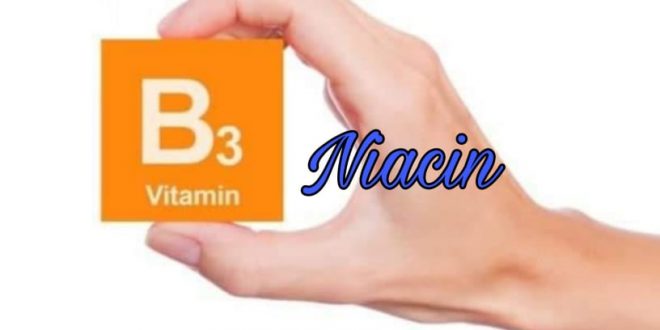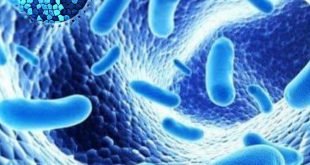Vitamin B3 or so-called niacin is a very important vitamin for health and can be obtained from available natural Vitamin B3 food sources.
In this article, we will determine what foods are rich in vitamin B3, what are the benefits of vitamin B3, side effects and other related topics.
Vitamin B3:
Vitamin B3 is a water-soluble B vitamin, and like other vitamins, it is essential for the body. It can be obtained from natural sources when you eat a healthy and balanced diet along with another source. which is usually used to reduce the risk of cardiovascular disease and to treat its deficiency, as well as to reduce cholesterol and triglycerides in the blood.
Niacin benefits:
It is usually recommended to receive the recommended amounts of this vitamin daily or at least to eat niacin foods. Women, for example, should get 15-18 mg, while men are 15-19 mg and by moving to the children’s category, they should get 9-13 mg. It should be noted here that obtaining these amounts of vitamin B3 or vitamin B3 foods will help to obtain its various benefits, including:
- Improves digestion: helps to get normal digestive and appetite performance.
- Helps treat Pellagra disease: Patients with pellagra or individuals with muscle weakness, digestive problems or skin irritation are recommended to take vitamin B3 supplements to compensate for this vitamin deficiency in these cases.
- Reduces cholesterol levels: Getting 1,100 mg per day of this vitamin or more may reduce the risk of atherosclerosis as a result of reducing LDL cholesterol levels.
- It is a water-soluble vitamin: this means being able to get rid of excess amounts of it by urinating after it passes through the bloodstream.
- Reduces impotence: Individuals with sexual disorders help produce sex hormones and thereby reduce their effect.
- Saves energy for the body: helps convert proteins, carbohydrates, and fats into energy.
- Improves mental health: Vitamin B3 is used to improve mental disorders.
- Diabetes Treats: Helps control HBA1C hemoglobin test levels among individuals with diabetes.
Vitamin B3 or Niacin foods:
The body cannot produce or store vitamin B3 and therefore the body’s need depends on the different sources of vitamin B3. It can be obtained with a healthy and balanced diet after consulting a doctor.
Important sources of vitamin B3 are:
- Liver Animals: It is considered one of the best sources of niacin in addition to containing protein, iron, choline, vitamin A and vitamin B.
- Chicken breast: A good source of this vitamin as well as its fat-free protein content.
- Tuna: Contains protein, vitamin B6, vitamin B12, selenium, omega-3 as well as vitamin B3.
- Turkey meat: Provides a good amount of niacin as well as amino acid tryptophan, which later turns into niacin.
- Salmon: This type of fish is a source of omega-3, which reduces the risk of heart disease, infections, and autoimmune disorders as well as an important source of this vitamin.
- Anchovies: A good source for it and for selenium, which reduces the risk of certain cancers.
- Beef: Rich in vitamin B3, vitamin B12, selenium, zinc, iron, omega-3 and protein.
- Peanuts: One of the best plant sources of vitamin B3 and also contains protein, vitamin E, vitamin B6, magnesium, phosphorus, and manganese.
- Avocado: Besides vitamin B3, it provides fiber, healthy fats and potassium.
- Brown rice: In addition to its niacin content, it contains fiber, vitamin B1, vitamin B6, magnesium, phosphorus, manganese, and selenium.
- Wheat: Cereals, including wheat, are important because they contain the outer shell that is separated in other products such as white bread. This crust contains a good amount of niacin.
- Mushrooms: One of the best sources of vegetables with this vitamin.
- Green peas: Contains a good amount of antioxidants that reduce the risk of cancer as well as vitamin B3.
- Potatoes: Both sweet and white potatoes provide a good amount of niacin.

Symptoms of vitamin B3 deficiency:
Severe vitamin B3 deficiency causes pellagra disease, which affects the skin, nervous system, digestive system and mucous membranes such as the eye and nose. Vitamin B3 deficiency is two types, one mild and the other severe. Symptoms of pellagra disease or severe vitamin B3 deficiency include:
- Symmetrical lesions on both sides of the body: they are inflamed and reddish areas of the skin. These lesions are more pronounced in pressure areas and sun-exposed areas, and some patients may develop lesions that cover their entire hands and feet.
- Butterfly-shaped lesions on the face, or V-shaped lesions after sun exposure.
- Swelling, pain, and irritation of the mouth, vagina, and urethra, if a severe and rapid deficiency in vitamin B3 may cause swelling and redness in the tongue.
- Abdominal pain with a feeling of heat in the stomach, chest or throat, as well as nausea, vomiting, diarrhea, and constipation.
- An ulcer may occur in the intestines, leading to bloody diarrhea.
- A change in mental state and personality disorders, memory problems with depression, leading to the mixing of diagnosis in this case with mental illness.
Causes of niacin deficiency:
The causes of vitamin B3 deficiency vary and are divided into two types. the first type due to a diet that lacks rich foods and the second type is due to various diseases such as problems of absorption of nutrients, diarrhea, liver diseases as well as alcoholism.
Vitamin B3 side effects:
Taking pregnant and lactating vitamin B3 is safe as long as it is in the recommended amounts. If the pregnant woman is under 18 years of age, she needs 30 mg of niacin per day, but if the pregnant woman is over 18 years of age, she needs 35 mg of niacin per day. However, there must be some damage caused by large amounts of vitamin B3, including:
- Increases irregular heartbeats among individuals with heart disease and unstable angina.
- It hurts individuals with certain diseases that are associated with the gallbladder.
- It hurts people with stomach or bowel ulcers.
- Worsens the condition of individuals with kidney disease as a result of its accumulation.
- Reduces thyroid hormone levels in the blood and thus exacerbates the symptoms associated with its disorders.
- Lowers blood pressure.
- Increases your risk of gout.
- Cause liver damage among individuals with liver disease.
- Increases the risk of yellow tumors specifically with yellow tumor infection.
- Increases blood sugar and therefore should be thoroughly checked among diabetics.
- It has a negative impact on low levels among people with Crohn’s disease.
- Increases histamine associated with increased allergy symptoms.
- It affects blood sugar during and after an operation and should not be taken at least two weeks before surgery.
 healthy life for all healthy life for all
healthy life for all healthy life for all






